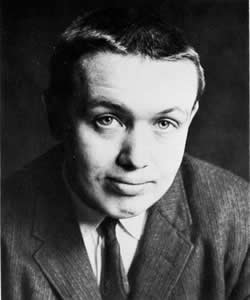John Anthony Bellairs (John Anthony Bellairs)

John Anthony Bellairs (January 17, 1938 – March 8, 1991) was an American author, best known for his fantasy novel The Face in the Frost and many gothic mystery novels for young adults featuring the characters Lewis Barnavelt, Anthony Monday, and Johnny Dixon. After earning degrees at University of Notre Dame and the University of Chicago, Bellairs taught English at various midwestern and New England colleges for several years before turning full-time to writing in 1971. He maintained a lifelong interest in archaeology, architecture, kitschy antiques, bad poetry, traveling to the UK, and studying history and Latin. His favorite authors included Charles Dickens, Henry James, C.V. Wedgwood, and Garrett Mattingly, as well as M.R. James, from whose ghost stories he occasionally borrowed elements to work into his own fiction. His first published work, St. Fidgeta and Other Parodies, was a collection of short stories satirizing the rites and rituals of Second Vatican Council-era Catholicism. The title story of St. Fidgeta grew out of stories Bellairs made up and shared with friends while living in Chicago. After committing one such story to paper, he sent it to the Chicago-based Catholic magazine the Critic, which published the story in its summer 1965 edition. The following year, the hagiography of St. Fidgeta was supplemented by eleven other humorous stories, including an essay on lesser-known popes of antiquity, a cathedral constructed over the course of centuries, and a spoof letter from a modern-day Xavier Rynne about the escapades at the fictional Third Vatican Council. The book remained out of print for decades until it was rereleased in a 2009 anthology. The Pedant and the Shuffly, his second book, was a short illustrated fable that detailed the chaotic encounter of the two title characters and logic. It was originally published in 1968 and rereleased in 2001 and 2009.
John Bellairs undertook The Face in the Frost while living in Britain and after reading J.R.R. Tolkien’s The Lord of the Rings, but it is not much like that book, apart from sharing the idea of a wizard who is palpably human and not a literary stereotype. Bellairs said of his third book: “The Face in the Frost was an attempt to write in the Tolkien manner. I was much taken by The Lord of the Rings and wanted to do a modest work on those lines. In reading the latter book I was struck by the fact that Gandalf was not much of a person—just a good guy. So I gave Prospero, my wizard, most of my phobias and crotchets. It was simply meant as entertainment and any profundity will have to be read in.” Writing in 1973, Lin Carter described The Face in the Frost as one of the three best fantasy novels to appear since The Lord of the Rings. Carter stated that Bellairs was planning a sequel to The Face in the Frost at the time. An unfinished sequel titled The Dolphin Cross was included in the 2009 anthology Magic Mirrors, which was published by the New England Science Fiction Association press. The House with a Clock in Its Walls (1973), Bellairs’s next novel, was originally composed as a contemporary adult fantasy, but at the time there was little market for such a thing. The second publisher to which it was submitted suggested rewriting it as a young readers’ book; Bellairs did so, and thus determined the future course of his career. Bellairs wound up writing 15 young-adult novels. Two books, The House with a Clock in its Walls and The Treasure of Alpheus Winterborn, were adapted for television in 1979 and 1980, respectively. A number of books have also been released in such languages as German, French, Japanese, and Polish, among others.
Born
- January, 17, 1938
- USA
- Marshall, Michigan
Died
- March, 03, 1991
- USA
- Havenhill, Massachusetts
Cemetery
- Greenwood Cemetery
- Massachusetts
- USA

